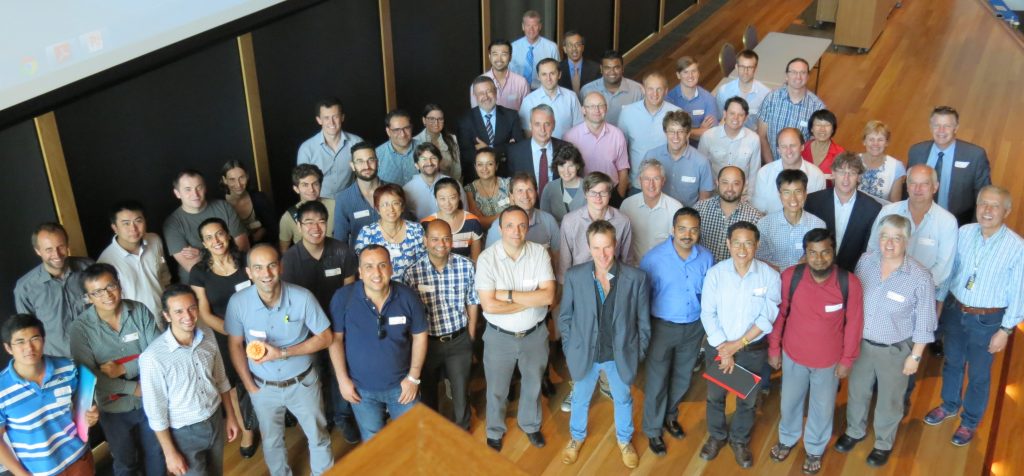ASTRI Public Symposium 2015 brings the CST community together
As part of ASTRI’s annual workshop last week, a public symposium was organized to facilitate the sharing of knowledge and to foster connections amongst the stakeholders within the CST community in Australia. This event proved to be highly valuable as can be seen in this media release by ARENA (the Australian Renewable Energy Agency).
ARENA CEO Ivor Frischknecht said ASTRI was at the forefront of efforts to forge strong links between researchers and industry players interested in deploying solar thermal technologies into the field.
The symposium included presentations from two high profile international guests. They gave a global perspective on the research and industry efforts to introduce CST in countries across the world in cost-competitive ways.
Dr Ranga Pitchumani, Chief Scientist of the US DOE SunShot program commended ASTRI for its enthusiasm, professionalism and well-articulated research propositions with an emphasis on fundamental science and engineering. “I encourage researchers to maintain an industrial perspective and to understand how their research in each subsystem interfaces with adjacent subsystems and fits within the context of the overall concentrating solar thermal system,” Dr Pitchumani said.
Dr Luis Crespo, President of the European Solar Thermal Electricity Association also attended and commended the CSIRO-led ASTRI for delivering a well-structured program. “The whole CST industry is looking forward to your future contributions, along with the respective supporting initiatives in the USA and Europe, to help the CST technologies to run their ways through the cost reduction curve as soon as possible,” Dr Crespo said.
Dr. Manuel Blanco, the Director of ASTRI, who is also the Chairman of Solar PACES, the Implementing Agreement of the International Energy Agency (IEA) for Concentrating Solar Thermal Power and Solar Chemistry technologies, presented the IEA Roadmap for CST electricity generation. He noted how CST and PV are called upon to play complementary role in the future world energy system. “The IEA predicts that as more and more none-dispatchable renewable energy technologies are added to electricity grids the role of dispatchable technologies such as CST will grow in importance. The IEA technology roadmap shows the importance of CST in the future, with CST predicted to dominate electricity production in Africa and the Middle East by 2050.”
The presentations from the symposium can be found on our publications page.

